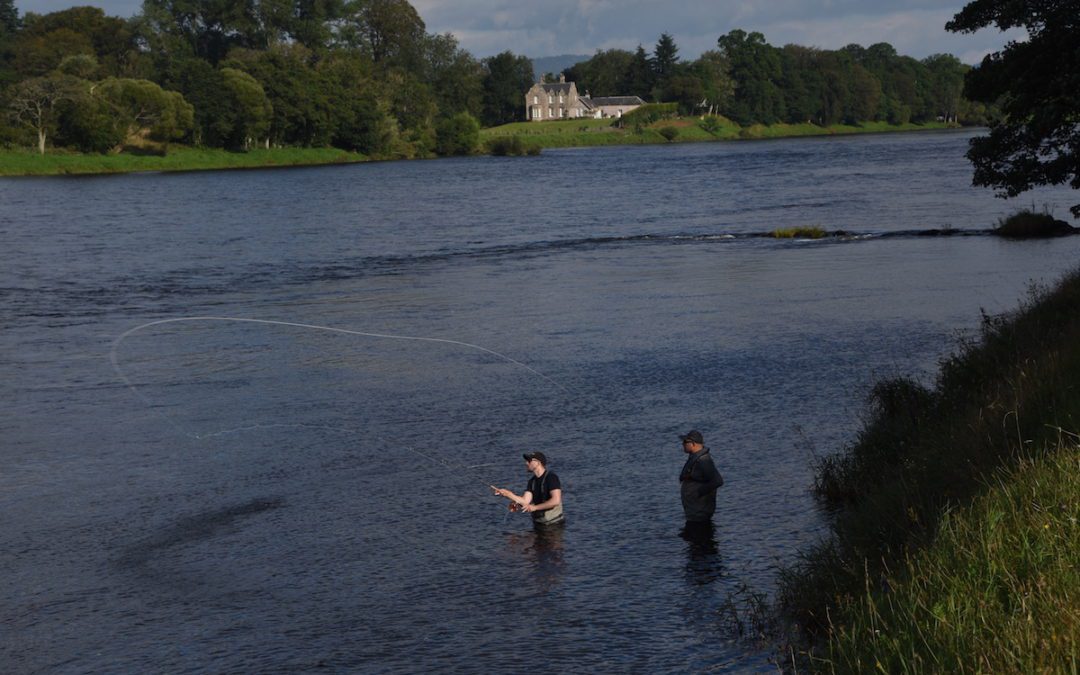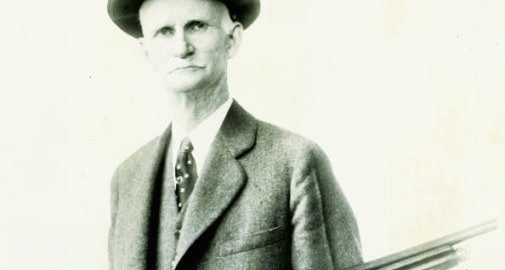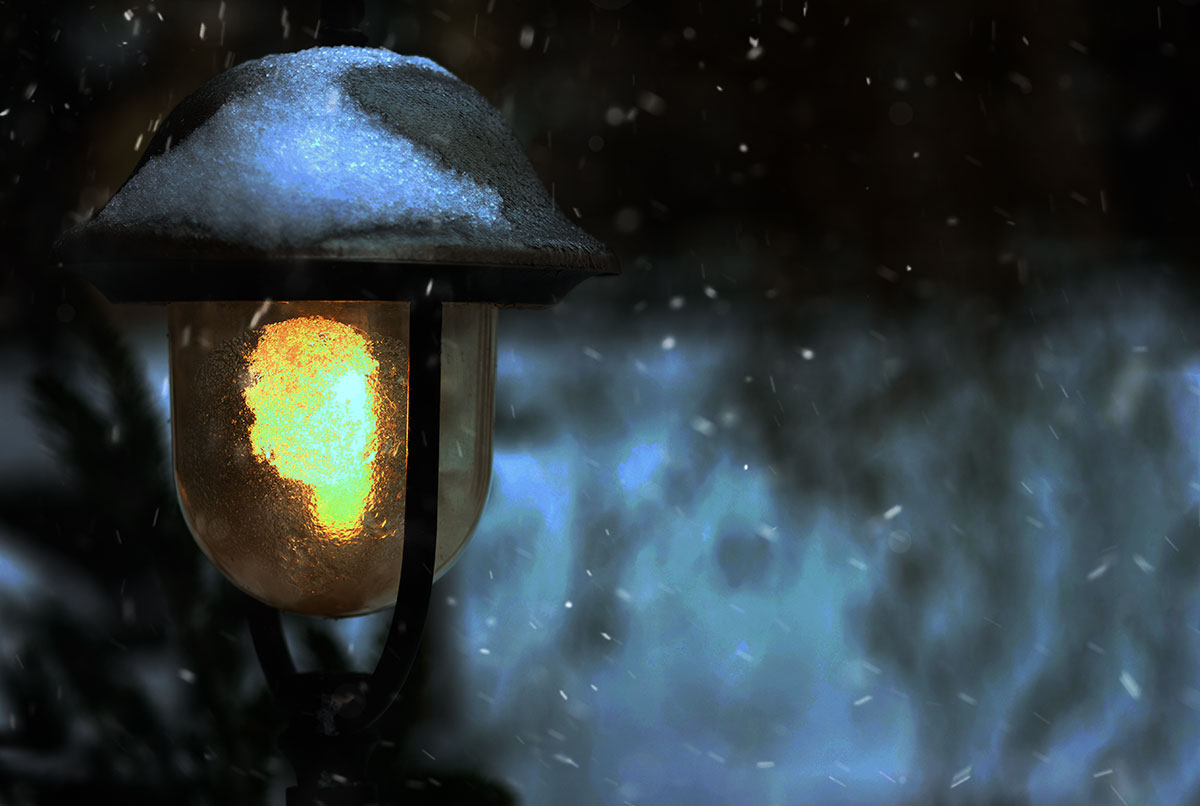Mention salmon and grouse in the same breath and hunting and fishing Scotland instantly comes to mind. Gentlemen in snap brim hats, Norfolk shooting jackets, plus fours and wellies to the knees, best gun poised with loader at the ready, their eyes searching the brow of the hill for the first incoming bird breaking the horizon.
Anglers attired in olive drab swirl spey lines over rumpled riffles dark as coffee and steaming in the first rays of sun. Beneath lie salmon fresh up from the North Sea with flanks as silver as newly forged broad swords.
Meredith and I and a handful of old friends from Virginia’s hunt country gathered for a long weekend at Gargunnock House in Stirlingshire, the heart of lowland Scotland. Through the broad carse, the River Forth meanders through the gentlest of rolling hills, a patchwork of meadows and fields of winter oats and barley, ripened tawny in the waning days of August. The landscape put me in mind of Kentucky’s bluegrass country.
Having never visited Scotland and utterly unschooled on driving on the left, my attention was riveted to the road. Each oncoming lorry filled its lane and loomed as a likely head-on collision. Posted along the shoulder, triangular red road signs with white panels cautioned drivers of this possible mayhem or that. One particularly caught my eye. Was that a silhouette of a pheasant?
Indeed. Like grasslands throughout the U.S., pheasants abound here in Scotland’s great central lowland. Stocked by lairds on their vast estates, ringnecks have gone native. Though Gargannock does not, many properties offer guests gunning holidays during the season.
I’d wanted to scout out fly fishing, but limited by season and time, the best I could manage was a quick rendezvous with Callum Conner of Scotia Fishing on the River Tay. From my book, Great Water, Great Fish – a guide to fly fishing around the world, I knew the Tay to be one of Scotland’s premier salmon rivers. To Georgina Ballantine, it yielded the UK’s record 64-pounder in Oct. 1922.
From January through October, spawning salmon run up river. While the best angling occurs in fall, opportunities abound throughout the season and the price of a guided day’s outing is roughly the equivalent to, say, a day’s float on Henry’s Fork or the Madison.
Our route from Gargunnock carried us beneath the 220-foot obelisk commemorating William Wallace’s victory over the British in 1297, the first in Scotland’s thousand-year battle for independence. We rode by Loch Leven, source of the strain of brown trout found in so many of our rivers.
We met Callum at the racecourse just north of Perth and followed him for a mile to his fishing hut on the Tay. His clients were two couples from Venice, FL, veterans of deep water fishing in the Gulf of Mexico who had never cast a fly let alone for finicky late season salmon.
The husbands opted to try Spey rods while wives chose spinning gear with which they were much more familiar. They rode an outboard powered pram to fish the main flow while the guys worked waters along the bank. Casting silver floating-diving plugs, the ladies landed two salmon, one four pounds and the other of nine.
Prior to arriving at Gargunnock, we headed west for the Isle Skye intent on visiting Dunvegan, seat of Clan McLeod, and the name of a dear friend’s farm just down the road from where I used to live in Upperville, VA. I’d always wanted to see its namesake.
We left the lowlands at Callander and entered a wonderful terrain of rounded gorse covered mountains tops swathed in thin cloud. A fitful low pressure trough with gusts approaching gale force had been spraying them with rain off and on for two days. Down each little cleft frothed a wet-weather rivulet grown into a waterfall. Every river showed pool after pool where salmon and trout, both browns and rainbows, were likely to hold. Anglers, though, were absent. Perhaps it was the season or that virtually all good water is privately held requiring payment of a rod-fee for a day’s fishing.
Increasingly, road signs warned of stag crossings reminding me that along with gunning for birds, this is prime deer stalking country. Though swaths of pine forest have been planted, most slopes are bereft of trees offering long-range shots tailor made for today’s medium caliber, high intensity rounds. Here my Nosler M48 Liberty in 26 Nosler would be quite at home.
Our route took us along that of the famed Jacobite steam train through the glacial valley of Glencoe and to the ferry at Mallaig. Docking at Armadale, we proceeded to Dunvegan noting mile after mile of trout streams and salmon rivers. A week spent fishing for browns, sea trout and salmon at prices of as little as £10 per day would not be misspent.
Back at Gargunnock House I met Brian White who lives on the estate. He briefed me on pheasant shooting around Stirling. Annually for the past 30 years, he and three of his friends have made the pilgrimage to Grogarry Lodge on South Uist, an isle in the Outer Hebrides. Since 1882, the lodge has earned a fine reputation for gunning for snipe and woodcock and ducks and geese, stalking red deer and casting for salmon and sea trout.
Perhaps the best month is September. That’s when, if fortune continues to smile, you’ll find me next year.




